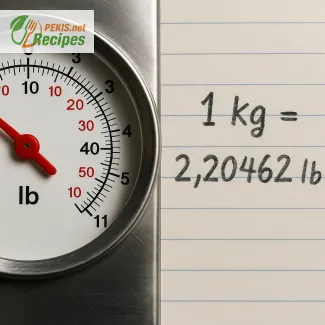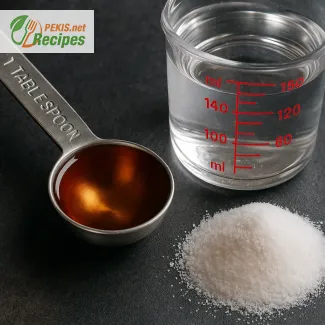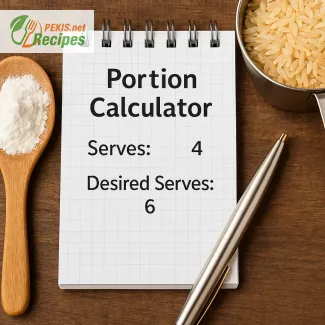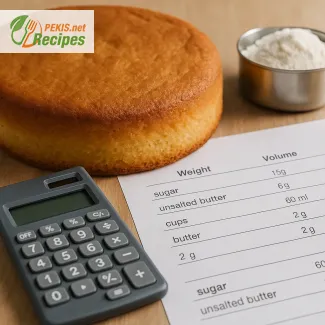
Converting 250 grams to cups depends on the ingredient, since each food has a different density. For example, 250 grams of flour is not equal in volume to 250 grams of sugar or butter. Knowing the right conversion prevents baking mistakes and ensures consistent results when adapting recipes across measurement systems. While 1 cup is about 240 milliliters, the actual cup equivalent of 250 grams varies with each ingredient, making context essential for accurate cooking.
Converting 250 grams into cups explained clearly
A practical guide for everyday cooking
Understanding how to convert 250 grams to cups is one of the most common questions in the kitchen, especially when following recipes from different countries. Grams measure weight, while cups measure volume, which means the conversion depends on the ingredient itself. For example, 250 grams of flour will not equal the same cup measurement as 250 grams of sugar or butter, because each ingredient has its own density.
This conversion is particularly important for home bakers, chefs, and food enthusiasts who need accurate results without compromising texture or flavor. While professional kitchens often rely on digital scales, many households still measure using cups, making it essential to know how the two units relate.
Why the 250 grams to cups conversion matters
- Different ingredients have unique weights per volume.
- Consistency in baked goods relies on accurate conversions.
- It saves time and prevents mistakes when adapting recipes.
- Many international recipes use either grams or cups, not both.
Historical and cultural background
The use of the cup as a unit of measurement dates back to the United States in the early 20th century, when standardized measuring cups became popular for home cooking. In contrast, European kitchens traditionally relied on metric measurements such as grams and liters. This difference often created confusion when recipes were shared across continents. The growing exchange of global recipes has made conversions like 250 grams into cups more relevant than ever.
How ingredients behave when converting 250 grams to cups
- Flour: Light and airy, easily compressed or fluffed, which changes the volume.
- Sugar: Granulated sugar packs more densely, while powdered sugar is lighter.
- Butter: A solid fat that converts more consistently between grams and cups.
- Rice, grains, or pasta: Vary greatly in shape and size, which affects how much fits in a cup.
Each of these differences highlights why there is no single universal answer to the question. Knowing the type of ingredient is the only way to get a reliable conversion.
Why you will love this guide
- Clear explanation of grams to cups conversion.
- Practical tips for different ingredients.
- Helps avoid common baking mistakes.
- Provides cultural context behind measuring systems.
- Easy to apply in both baking and cooking.
Creative variations in using conversions
- Adjusting recipes from cookbooks or blogs written in another measurement system.
- Scaling recipes up or down by applying the same ratio once you know the conversion.
- Using conversions for meal prep, bulk cooking, or when shopping for ingredients.
- Teaching children or beginners the basics of measurement through simple conversions.
Measurement systems and kitchen entities
The relationship between grams, cups, ounces, and milliliters forms the foundation of modern recipe writing. Understanding these entities helps bridge the gap between European metric standards and American volume-based measurements. For instance, 1 cup equals approximately 240 milliliters, but how many grams fit in that cup depends entirely on whether you are filling it with flour, sugar, or liquids.
By focusing on 250 grams to cups, this guide gives cooks a practical tool for handling diverse recipes, ensuring better results and confidence in the kitchen.
FAQ questionHow many cups is 250 g of flour?
For all-purpose flour, assume ≈125 g per cup (spoon-and-level). That makes 250 g ≈ 2 cups. Scooping directly from the bag compresses flour and can add 10–15% more weight per cup; fluff, spoon, and level to stay consistent.
FAQ questionHow many cups is 250 g of sugar?
Different sugars pack differently:
- Granulated sugar: ≈200 g per cup → 250 g ≈ 1 1/4 cups.
- Light/dark brown sugar (packed): ≈220 g per cup → 250 g ≈ 1 1/8 cups.
- Powdered/icing sugar: ≈120 g per cup → 250 g ≈ just over 2 cups.
Measure brown sugar firmly packed for reliability; icing sugar should be sifted before measuring.
FAQ questionHow many cups is 250 g of butter?
Butter is predictable: 1 cup = 227 g. Therefore 250 g ≈ 1 cup + 1 1/2 tbsp. If your sticks are marked, 1 tbsp ≈ 14 g, so add roughly 1 1/2 tbsp beyond a full cup.
FAQ questionIs 250 g the same as 1 cup?
Only for specific cases. With water-like liquids, 250 g ≈ 250 ml, which is ≈1.04 US cups but exactly 1 metric cup (250 ml). For solids like flour or sugar, grams measure weight and cups measure volume, so the match changes with density.
FAQ questionHow do I convert 250 g to cups for any ingredient?
Use a simple process:
- Find the ingredient’s grams-per-cup (e.g., flour ≈125 g, sugar ≈200 g).
- Compute cups = 250 ÷ grams-per-cup.
- Adjust for US cup (≈240 ml) vs metric cup (250 ml) and your packing method.
Example: rolled oats ≈90 g per cup → 250 g ≈ 2 3/4 cups.
FAQ questionWhy do my cup results vary each time?
Small changes in compaction, scoop vs spoon-and-level, humidity, and grind size shift volume. To reduce drift: aerate dry ingredients, spoon-and-level the cup, avoid tapping the rim, and keep written ratios that worked for your kitchen.
FAQ questionDo cup sizes differ by country, and does it matter here?
Yes. A US cup ≈ 240 ml, a metric/Australian cup = 250 ml. That ~4% gap can change results—noticeable in delicate bakes. If you’re following US sources, stick to US cups; if you’re using metric materials, prefer grams for the most consistent outcomes.
PEKIS – professional chef and recipe developer with more than 25 years of experience, specialized in European and international cuisine. For this guide, I draw on my background in baking conversions and years of adapting recipes between grams and cups, helping cooks bridge the gap between different measurement systems with confidence.



